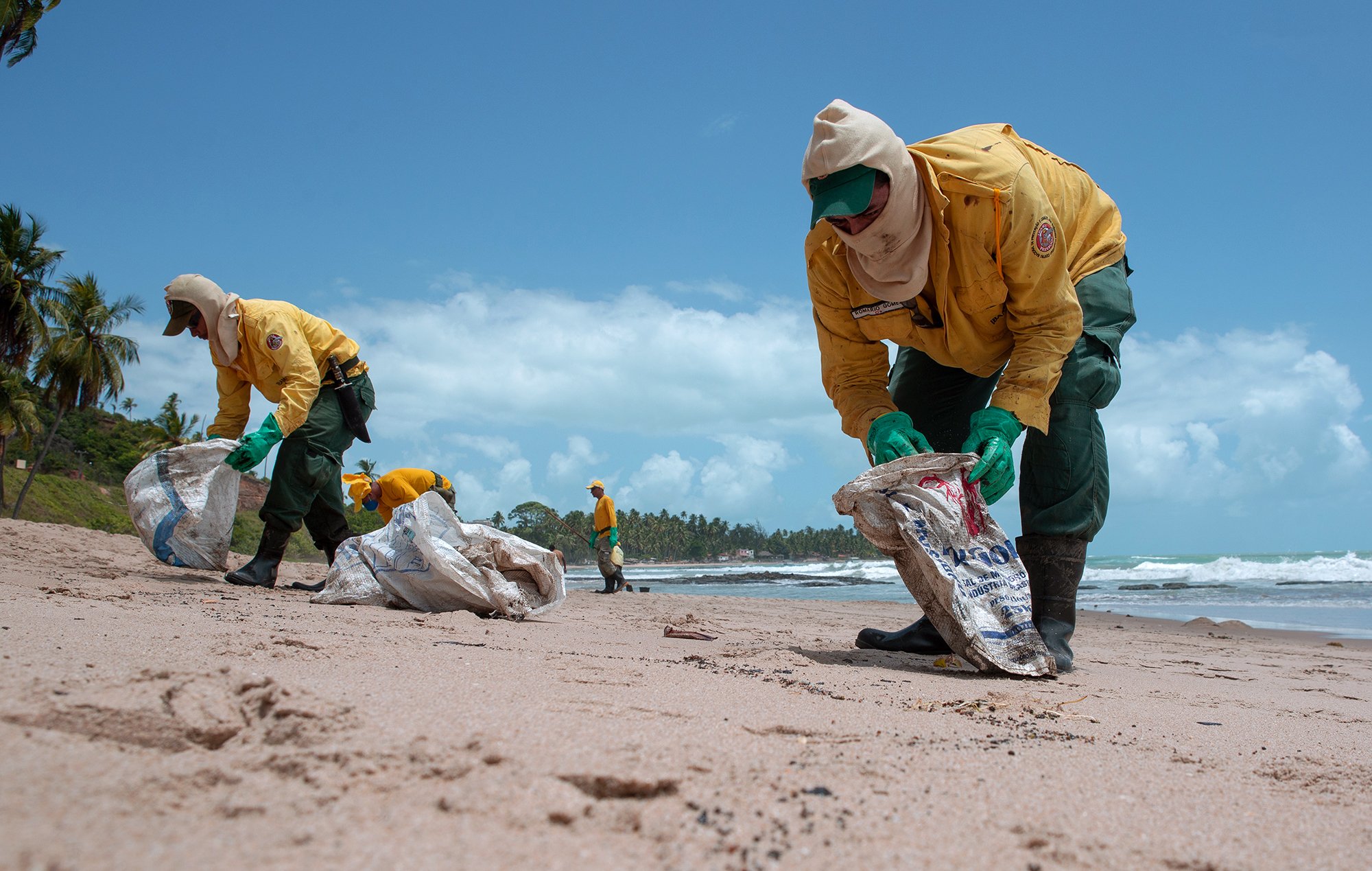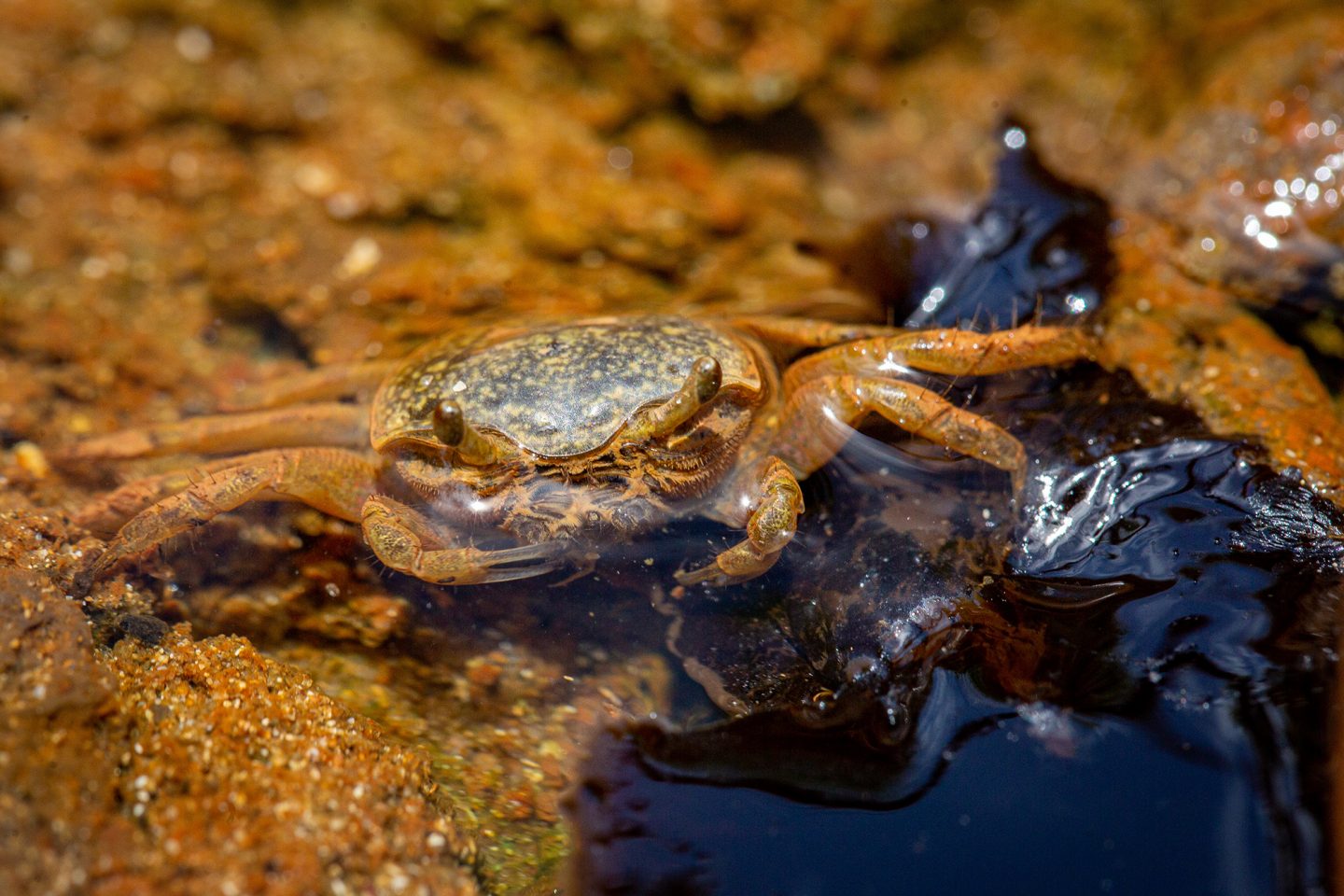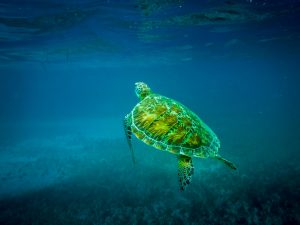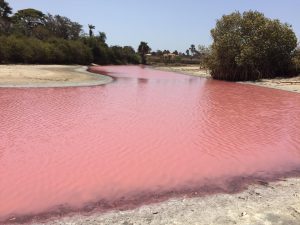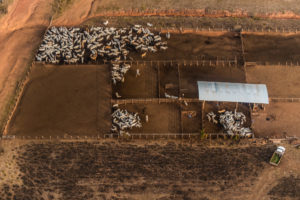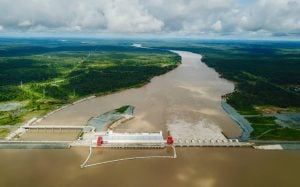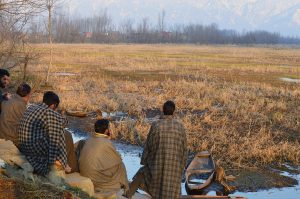After a long day collecting what felt like tonnes of crude oil from one of the most beautiful beaches in the Brazilian state of Pernambuco, Vandecio Sebastião Santana was tired and frustrated.
“This oil is coming from the high seas. Not from near here,” he yelled. “Do you think our work here in the sand is enough? It’s not.”
Santana is one of thousands of volunteers who have been cleaning Brazil’s beaches since mysterious oil patches started staining them in late August. They have been battling to protect the ecosystem that gives them fish to eat and sell and beautiful scenery to attract tourists. Their oiled hands and legs have featured in media across the country and the world.
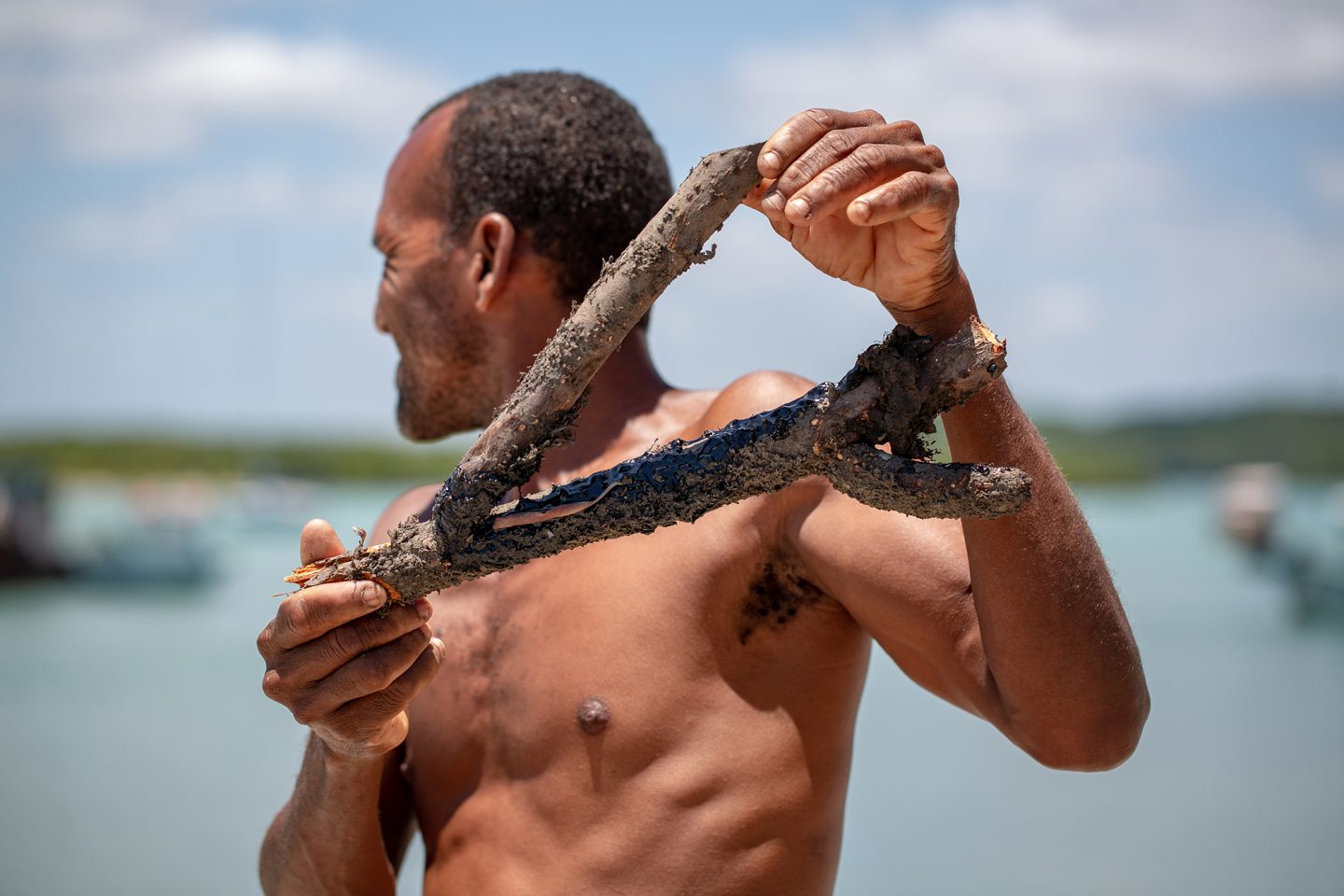
What looked at first like a small leak has now become one of Brazil’s most serious environmental disasters. Hundreds of beaches have been polluted in 11 states, covering more than half of the country’s coastline. At least 106 animals, mostly sea turtles, have died.
Investigators have come to believe that Venezuelan oil leaked from a ship travelling in international waters hundreds of kilometres off Brazil’s coast. But the culprit remains elusive.[oilspill_2019 lang=”en”]
Gaps in governance
The disaster has highlighted the challenge of enforcing global shipping industry rules across the vastness of the ocean. Leaking vessels have caused several catastrophes at sea.
In 2002, the oil tanker Prestige sank off the coast of Spain, causing the worst environmental disaster the region had ever seen. In 2010, the Deepwater Horizon offshore drilling rig exploded in the Gulf of Mexico, causing the largest-ever spill in US waters. Last year, an Iranian tanker carrying one million barrels of oil crashed into a freighter in the East China Sea, raising fears for marine life.
While many experts agree the laws governing the global shipping industry are comprehensive, enforcement is highly fragmented. Inspecting ships is sometimes the responsibility of three separate countries: the flag state that registered the ship; the port state where the ship docks; and the state in whose waters the ship is sailing.
It’s still common for vessel owners to go for a so-called flag of convenience, which means registering the ship in a country with weak regulations. Many of these countries have vastly improved their inspections in recent years. But some of the most popular flag countries, such as Panama and Greece, have thousands of ships to inspect, which can overwhelm them.

“The framework is pretty good,” said James Kraska, a professor of international maritime law at the US Naval War College in Newport, Rhode Island. “What’s not good is compliance. There are a few problem states undermining the system. And then there are the illegal networks, the criminal networks.”
These networks are commonly involved in illegal fishing. But they have also become a concern around countries suffering from trade sanctions, which have more reasons to turn a blind eye to smugglers.
The networks often use dark ships – ships that turn off transponders to make themselves invisible to monitoring systems. They have been found smuggling Venezuelan oil to evade US sanctions, raising concerns among Brazilian officials that they may be behind the disaster.
But that is speculation. The origin of the spill remains a mystery. Leandra Gonçalves, a researcher at the University of São Paulo’s Institute of Oceanography, says the fragmented system of governance means some problems, such as the leak, never get reported. Fixing it is key to strengthening the international safety net.
“There is a gap in the international governance of oceans,” she said. “And this gap must be closed.”
Stopping the black tide
Santana was born and raised in Cabo do Santo Agostinho, a small beach town in the northeast of Brazil. Aged 36, he works as a paddleboard teacher, catering to thousands of tourists each year.
“Not everyone has studied [or] has a job here,” he said. “We depend on tourism.”
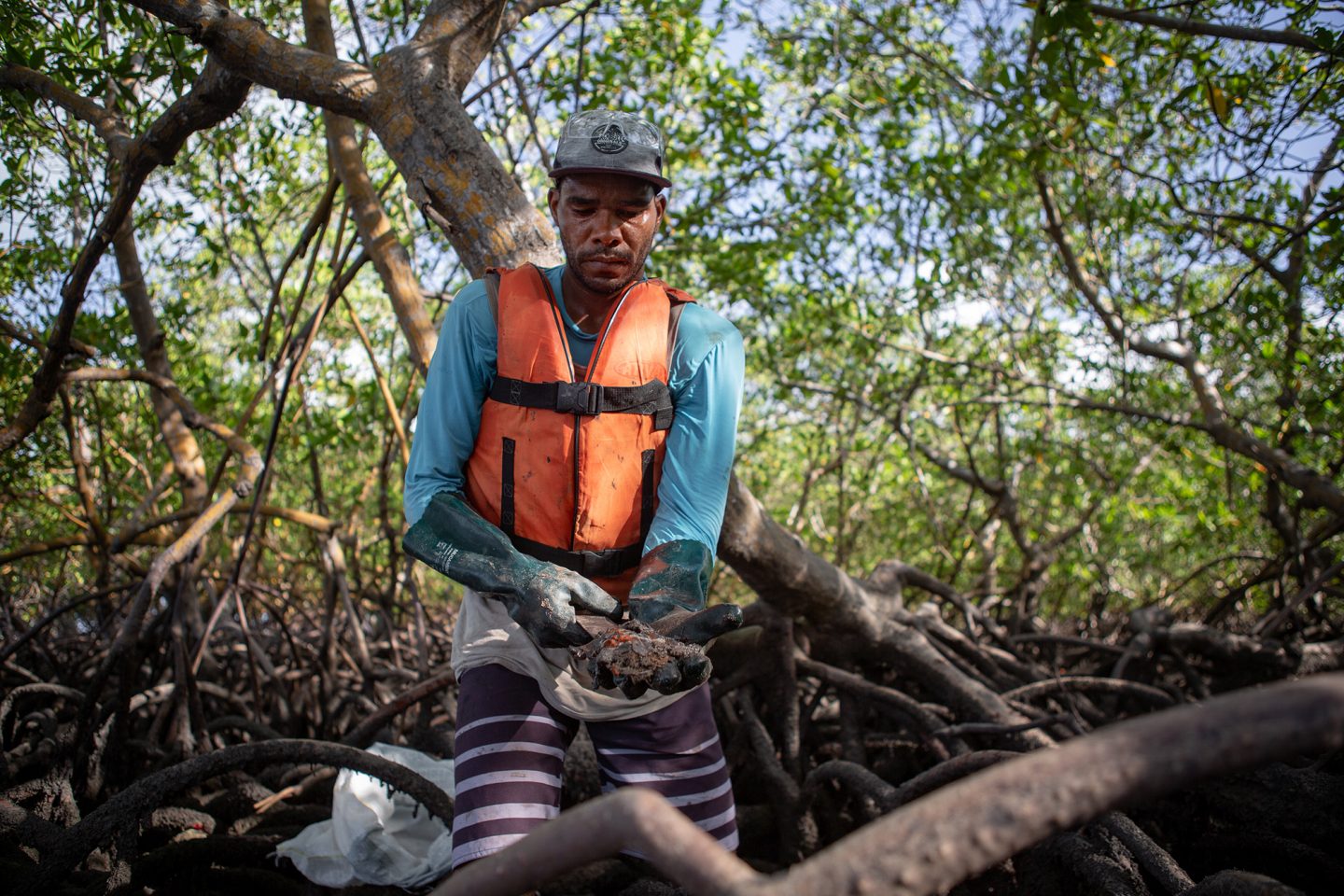
When the China Dialogue team met Santana, he had been cleaning the beach for 17 days. Atop his paddleboard, he collected the oil wearing four pairs of gloves to avoid contamination.
The thousands of Brazilians that, like Santana, gathered to desperately clean beaches were mostly improvising. Without proper equipment or guidance, they struggled to clean blobs of highly viscous crude oil off the sand, mangroves and rocks.
Across the two states China Dialogue Ocean visited, there were dozens of empty fish stalls and restaurants. Sales, shop owners said, had dropped 80%.
“Clients think the fish and shellfish are contaminated,” Demétrio Melo, who works at a fishmonger’s in the city of Olinda, said. “They are scared.”
The problem is made worse because many fishermen here live in poverty and depend on the fish they sell. This is the case with Maria do Socorro, a 51-year-old who lives with her husband and daughter in a 20 square metre wooden house with a dirt floor in the beach town of Nova Cruz.
“The fish are oiled,” she said. “No one will buy them.”
The scale of the damage to the environment is still unknown, but more than 10 nationally-protected environmental reserves have been poisoned. Valmir Ramos da Silva, director of environment in the city of Barreiros, Pernambuco, left his office to help other residents clean up.
“We are mostly worried about the river, the estuary,” he said. “This is one of the least polluted estuaries in Brazil. This won’t only affect biodiversity, but also fishermen. That is their income.”
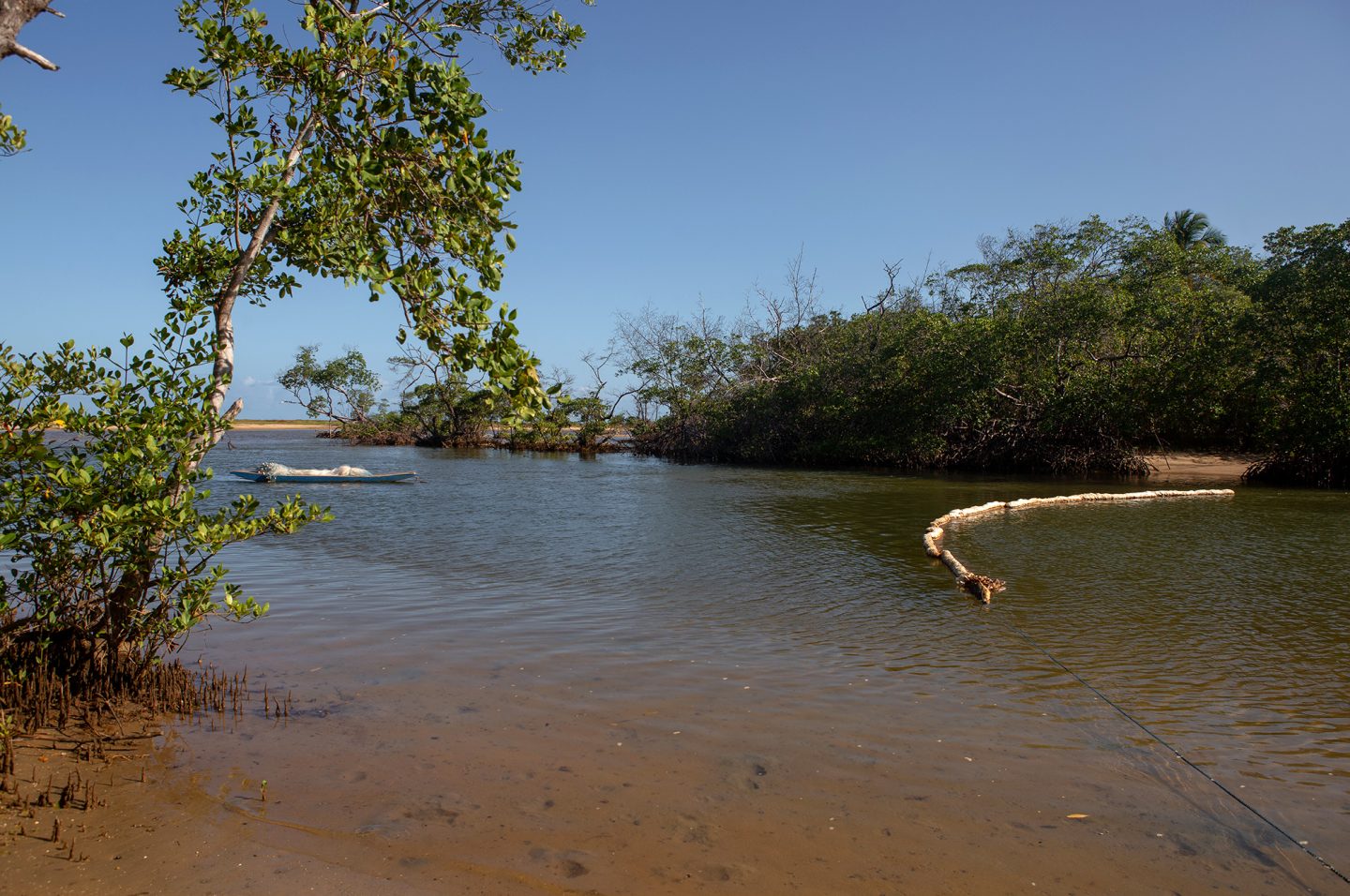
From August to late November, the oil has reached more than 800 beaches, little by little. On several, volunteers were able to clean most of the oil only to see it show up again a few weeks later.
As Santana worked under the sun with no pay, he watched many in his town go hungry because they couldn’t fish. But he also knew nothing they did would be enough to stop the black tide.
“This work we are doing needs to be the last one,” Santana said. “But we don’t have vessels to go to the high seas. And we have no structure to hold off the oil that is coming.”
Frustration at slow government response
Fishermen, environmentalists and academics alike were frustrated with what they saw as government inaction.
Officials in cities were discarding the oil collected from the beaches in landfills and abandoned buildings, ignoring environmental standards. Volunteers didn’t get medical attention and there wasn’t enough equipment to clean up the oil.
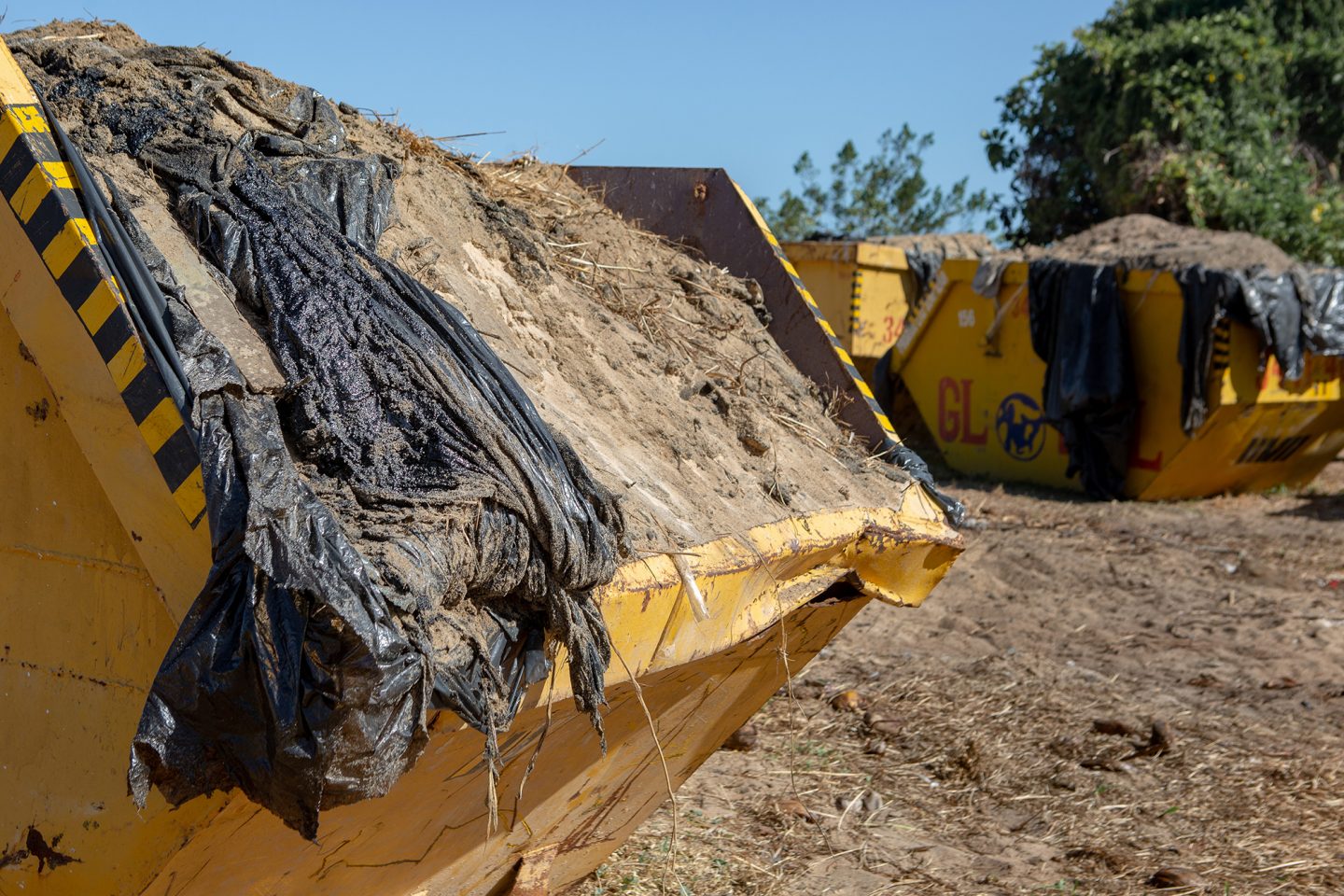
Many accused the government of far-right president, Jair Bolsonaro, of not doing enough. Bolsonaro only ordered an investigation into the matter on 5 October, 41 days after the disaster began.
On 18 October, federal prosecutors even went to court to force the government to act.
“The government insists on saying everything is alright. It’s not,” prosecutor Ramiro Rockenback told reporters. “What’s happening is very serious.”
Mission impossible: finding the source
The source of an oil spill of this magnitude would seem easy to identify. It’s pretty easy to see an enormous tanker struggling at sea as tonnes of oil spills out of it. Companies generally report it, and an aircraft would easily be able to see it.
Not this time. Researchers believe the spill happened roughly a month before it reached the Brazilian coast. By then, a ship, even if it was struggling, would already be gone.
The satellites that roam over us have a limited capacity for collecting and storing data. Over the high seas, their images cannot capture the surface in enough detail to reveal the texture of an oil spill. Anything smaller than 500 square metres is pretty much invisible.
Many, including Brazil’s national environmental protection agency, said it was impossible to catch the culprit using satellites. But some tried regardless.
Leonardo Barros runs a company called Hex that specialises in geospatial technology. He and his team volunteered to help the government.
“There is no doubt the biggest challenge is the availability of data,” Barros said. “This makes the work more complex and even innovative.”

Using models to determine the ocean currents and winds, they identified a rough area where the oil could have spilled: the South Equatorial Current, which comes from Africa and splits nearer Brazil’s eastern tip, travelling north and south of the coastline. Other researchers agreed.
They then collected the images of satellites belonging to Nasa and the European Space Agency, and processed them. Roughly 700km away from Brazil’s coast, they spotted an indication of a stain over 200km long, and a ship they couldn’t identify.
The next step was to collect ship location data using the automatic identification system, which tracks all ships that have turned on their transponders, as they are obligated to do. Hex was able to find four ships in the area at the time they thought the spill occurred. Only one was carrying Venezuelan oil – the Greek-flagged Bouboulina.
Hex’s report was the basis for a federal police investigation in early November that fixed the Bouboulina as the main suspect. But the Greek company that owned it, Delta Tankers, strongly denied any oil had leaked from its ship.
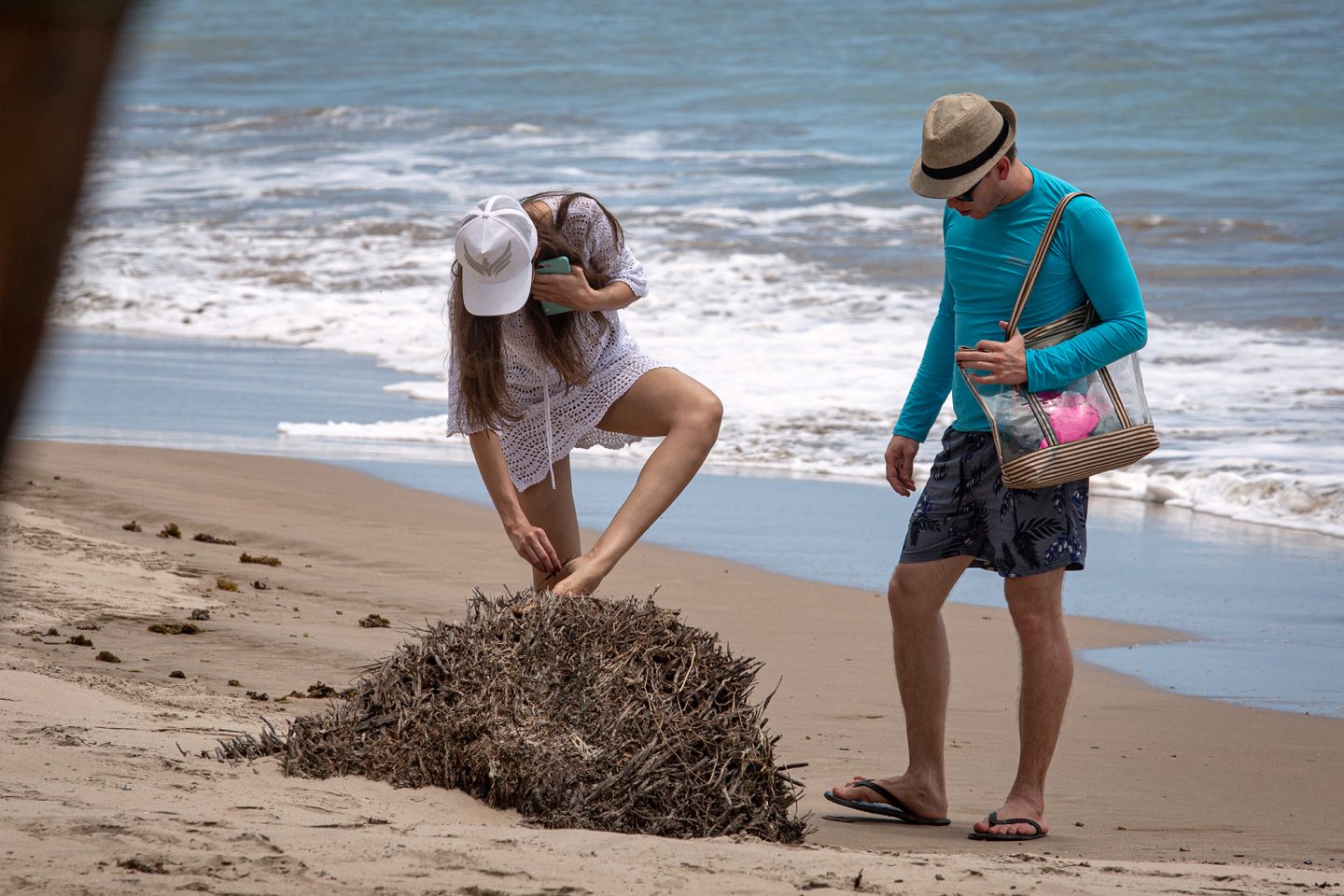
This week, Pedro Binelli, a representative of Brazil’s environmental protection agency, Ibama, told Congress his team believes the stain spotted by Hex was nothing but chlorophyll, a green pigment that indicates the concentration of microscopic organisms called phytoplankton in the water.
Researchers, Binelli said, were now looking for the culprit even further away, closer to Africa.
“The more time goes by, the harder it becomes to find the origin of the oil stains,” he told the G1 news website.
Other researchers working independently came up with more theories. At the Federal University of Alagoas, a professor pointed to a ship called Voyager 1. The American NGO Skytruth looked suspiciously at a ship called The Amigos. Both backtracked from their initial discoveries days later.
Barros explained his company’s report was only one element to help the investigation, and that a dark ship could also have been the culprit.
“In that time period, in that place … there were four vessels,” he said. “Does that eliminate the possibility that an unidentified vessel was also there? No.”
Who pays for the pollution?
The investigation seems stuck. But there are mechanisms to protect member states of a few international conventions against oil spills even when the source is unknown.
One of them, which establishes the International Oil Pollution Compensation Fund, guarantees payment of damages to countries that suffer from spills if the shipping company responsible can’t pay or the victim can’t find the guilty ship.
But Brazil has not ratified this convention, meaning if it doesn’t find the guilty ship, it will get no compensation.

Brazil lacks a robust monitoring system for its seas. In the Brazilian navy, many officials agreed that Brazil should have done a better job of protecting itself, but that would have cost billions.
“Whose fault is it? What failed? Brazil is the victim of an assault,” one official said, asking his name not to be printed. “This could happen to any country.”
Beyond national jurisdiction
While fishers and residents of hundreds of Brazil’s beach cities feel the effects of the spill, environmentalists are still struggling to measure its impact.
“We can’t estimate impact without knowing the location and the amount of oil that was spilled,” said Thiago Almeida, who heads Greenpeace’s climate and energy campaign in Brazil.
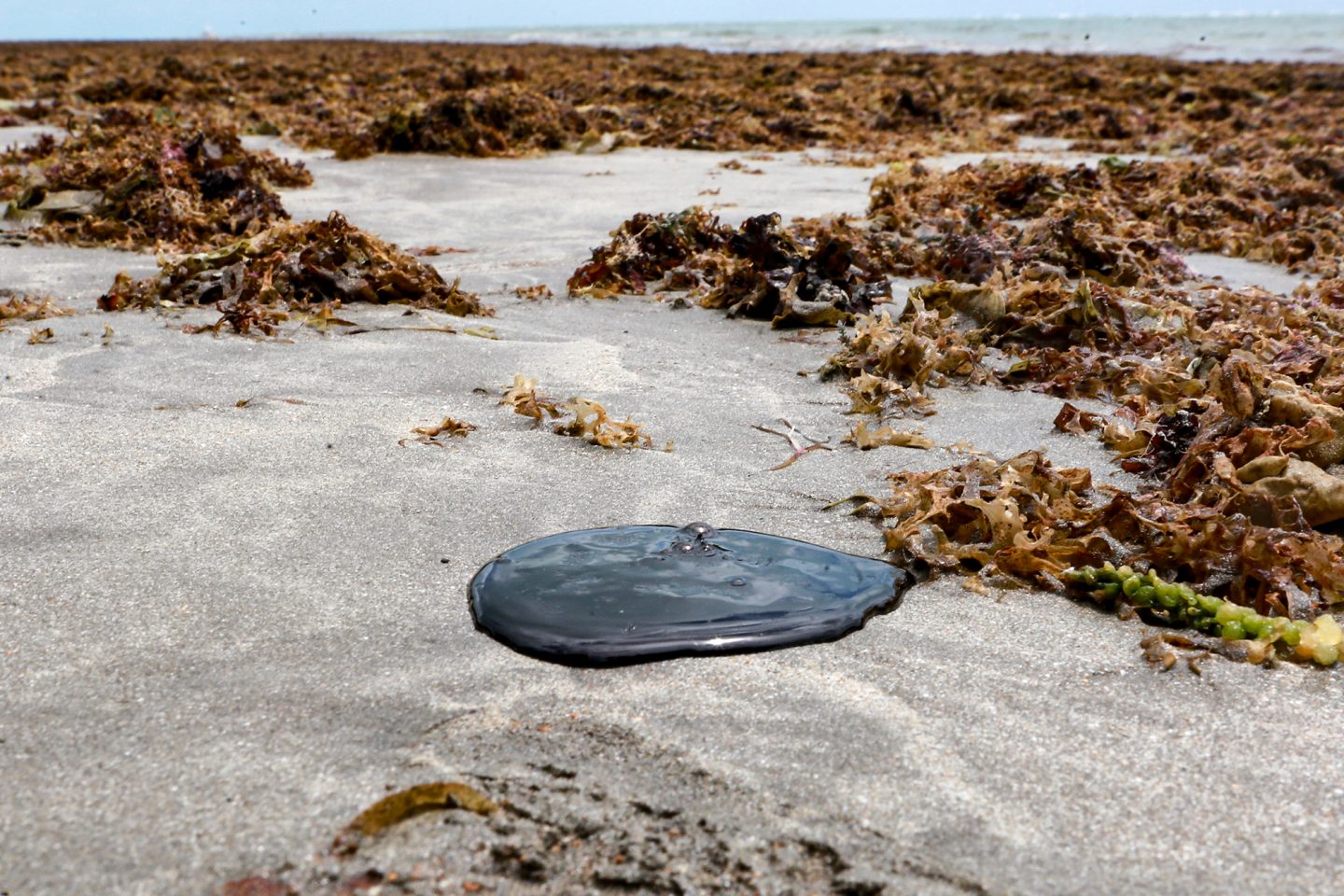
Almeida explained coastal ecosystems are the most vulnerable, as they store most of the nurseries of marine life. But life in the high seas has likely been damaged too.
There, no one can claim compensation. The high seas lie beyond the jurisdiction of any one country. They cover over half the planet and are home to 90% of marine life.
Countries are negotiating more protections to the high seas, through a UN treaty that would protect marine biodiversity of areas beyond national jurisdiction.
Among other things, a treaty could increase the number of sanctuaries in the high seas; currently only 1% is protected. It could also create a framework for environmental impact assessments in international waters.
Though the world finally seems ready to talk about the ocean, damage to the high seas is largely absent from discussion of the spill in Brazil. That doesn’t mean it won’t affect humans for a long time to come.

“Oil is extremely toxic and carcinogenic,” Almeida said. “It slowly dissolves and, as it does, it’s ingested by sea creatures, going up the food chain.”
Meanwhile, Santana continues to clean his beach. He reported seeing a fresh batch of oil arrive in Cabo de Santo Agostinho only two weeks after China Dialogue Ocean visited the city.
Residents, he said, were fishing again, even as scientists warned the fish could be poisoned.
“People are fishing and eating the fish,” he said. “They aren’t experts. They don’t want to believe.”
